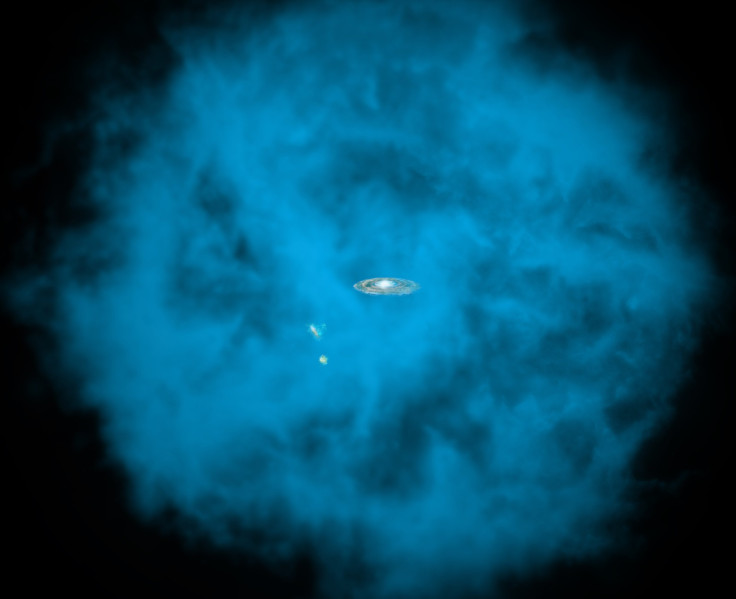Milky Way’s Halo Spins At Dizzying Speed, Scientists Find To Their Surprise

Astronomers studying space outside our galaxy, the Milky Way, have discovered that a giant gas halo surrounding the galaxy, contrary to expectations, is spinning. The spin is in the same direction as the Milky Way itself and at a comparable speed.
The discovery was made by researchers at the University of Michigan’s College of Literature, Science, and the Arts, and according to NASA, the “new knowledge sheds light on how individual atoms have assembled into stars, planets, and galaxies like our own, and what the future holds for these galaxies.”
“This flies in the face of expectations. People just assumed that the disk of the Milky Way spins while this enormous reservoir of hot gas is stationary — but that is wrong. This hot gas reservoir is rotating as well, just not quite as fast as the disk,” Edmund Hodges-Kluck, assistant research scientist and co-author of a study on the topic, said.
The new data came from a NASA-funded research that used a European Space Agency telescope called XMM-Newton. Analyses of shifts in wavelength of very hot oxygen, used by researchers to measure the motion of the halo, showed that the halo is moving in the same direction as the Milky Way but at a somewhat slower speed of 400,000 miles an hour, compared to the 540,000 miles an hour at which our galaxy rotates.
Almost all galaxies that have been studied by scientists are missing a lot of matter that was expected to be found. While the mysterious “dark matter” — detected only by its gravitational pull — can account for about 80 percent of the missing matter, most of the remaining 20 percent is also missing from the galaxy disks. The halo has been found to contain some of the missing matter, and therefore, further knowledge about it “can help us learn both how the material got there in the first place, and the rate at which we expect the matter to settle into the galaxy.”
"Now that we know about the rotation, theorists will begin to use this to learn how our Milky Way galaxy formed — and its eventual destiny. … We can use this discovery to learn so much more — the rotation of this hot halo will be a big topic of future X-ray spectrographs,” Joel Bregman, another co-author of the study, said.
Evidence for a halo of the Milky Way was originally provided by data collected by the Chandra X-ray Observatory and it is estimated that the halo of gas, which is several times larger than the galaxy itself, has a mass comparable to the mass of all the stars in the galaxy. Made up of ionized plasma, the temperature in the halo ranges between 1 million and 2.5 million degrees kelvin (1.8 million and 4.5 million degress Fahrenheit).
© Copyright IBTimes 2025. All rights reserved.




















